Dial M for Murder is a 1954 American crime mystery film directed by Alfred Hitchcock, starring Ray Milland, Grace Kelly, Robert Cummings and John Williams. Both the screenplay and the successful stage play on which it was based were written by English playwright Frederick Knott. The play premiered in 1952 on BBC Television, before being performed on stage in the same year in London's West End in June, and then New York's Broadway in October. Originally intended to be shown in dual-strip polarized 3-D, the film played in most theatres in ordinary 2-D due to the loss of interest in the 3-D process (the projection of which was difficult and error-prone) by the time of its release. The film earned an estimated $2.7 million at the North American box office in 1954.
| Dial M for Murder | |
|---|---|
Theatrical release poster by Bill Gold | |
| Directed by | Alfred Hitchcock |
| Produced by | Alfred Hitchcock |
| Screenplay by | Frederick Knott |
| Based on | Play: (1952) Frederick Knott |
| Starring | Ray Milland Grace Kelly Robert Cummings John Williams |
| Music by | Dimitri Tiomkin |
| Cinematography | Robert Burks |
| Edited by | Rudi Fehr |
| Distributed by | Warner Bros. |
Release date |
|
Running time | 105 minutes |
| Country | United States |
| Language | English |
| Budget | $1.4 million |
| Box office | $6 million |
Screenplay
Tony Wendice (Ray Milland), an English professional tennis player, is married to wealthy socialite Margot (Grace Kelly), who has had an affair with American crime-fiction writer Mark Halliday (Robert Cummings). When Tony retires from tennis, he secretly discovers the affair and decides to murder Margot, both for revenge and to ensure that her money will continue to finance his comfortable lifestyle.
Tony invites an old acquaintance from the University of Cambridge, Charles Alexander "C. A." Swann (Anthony Dawson), to his London flat. Tony is aware that Swann has become a small-time criminal, and has been secretly following Swann so he can blackmail him into murdering Margot. Tony tells Swann about Margot's affair. Six months before, Tony stole her handbag, which contained a love letter from Mark, and anonymously blackmailed her. After tricking Swann into leaving his fingerprints on the letter, Tony offers to pay him £1,000 to kill Margot; if Swann refuses, Tony will turn him in to the police as Margot's blackmailer. Swann's credibility, in denying Tony's accusation, would be hurt by his criminal history.
When Swann agrees, Tony explains his plan: the following evening he will take Mark to a party, leaving Margot at home and hiding her latchkey outside the front door of their flat. Swann is to sneak in when Margot is asleep and hide behind the curtains in front of the French doors to the garden. At eleven o'clock, Tony will telephone the flat from the party. Swann must kill Margot when she answers the phone, open the French doors, leave signs suggesting a burglary gone wrong, exit through the front door, and hide the key again.
The next night, Swann enters the flat while Margot is in bed, and waits. At the party, Tony discovers his watch has stopped, so he phones the flat later than intended. When Margot comes to the phone, Swann tries to strangle her with his scarf, but she manages to grab a pair of scissors and kill him. She picks up the telephone receiver and pleads for help. Tony tells her not to do anything until he arrives home. When he returns to the flat, he calls the police and sends Margot to bed. Before the police arrive, Tony moves what he thinks is Margot's latchkey from Swann's pocket into her handbag, plants Mark's letter on Swann, and destroys Swann's scarf, replacing it with Margot's own stocking in an attempt to incriminate her.
The following day, Tony persuades Margot to hide the fact that he told her not to call the police immediately. Chief Inspector Hubbard (John Williams) arrives and questions the Wendices, and Margot makes several conflicting statements. When Hubbard says Swann must have entered through the front door, Tony falsely claims to have seen Swann at the time Margot's handbag was stolen, and suggests that Swann made a copy of her key. Hubbard does not believe this because no key was found on Swann's body. Hubbard arrests Margot after concluding that she killed Swann for blackmailing her. Margot is found guilty and sentenced to death.
Some months later, on the day before Margot's scheduled execution, Mark visits Tony, saying he has devised a story for Tony to tell the police in order to save Margot's life. To Tony's consternation, Mark's "story" is what did actually happen: that Tony bribed Swann to murder Margot. Tony says the story is too unrealistic. Hubbard arrives unexpectedly, and Mark hides in the bedroom. Hubbard asks Tony about large sums of cash he has been spending, tricks him into revealing that his latchkey is in his raincoat, and inquires about Tony's attaché case. Tony claims to have lost the case, but Mark, overhearing the conversation, finds it on the bed, full of banknotes. Deducing that the money was Tony's intended payoff to Swann, Mark stops Hubbard from leaving and explains his theory. Tony tells another lie, "confessing" that the cash was Margot's blackmail payment to Swann, which he had concealed to cover up her guilt. Hubbard appears to accept Tony's explanation over Mark's theory, and Mark leaves angrily. Hubbard discreetly swaps his own raincoat with Tony's, and as soon as Tony leaves, Hubbard uses Tony's key to re-enter the flat, followed by Mark. Hubbard had already discovered that the key in Margot's handbag was Swann's own latchkey, and deduced that Swann had put the Wendices' key back in its hiding-place after unlocking the door. Now suspecting Tony of having conspired with Swann, Hubbard has developed an elaborate ruse to confirm this.
Plainclothes policemen bring Margot from prison to the flat. She tries unsuccessfully to unlock the door with the key in her handbag, then enters through the garden, proving she is unaware of the hidden key. Hubbard has Margot's handbag returned to the police station, where Tony retrieves it after discovering that he has no key. The key from Margot's bag does not work, so he uses the hidden key to open the door, proving his guilt. With his escape routes blocked by Hubbard and another policeman, Tony calmly makes himself a drink, congratulates Hubbard and admits defeat.
- Ray Milland as Tony Wendice
- Grace Kelly as Margot Mary Wendice
- Robert Cummings as Mark Halliday
- John Williams as Chief Inspector Hubbard
- Anthony Dawson as C. A. Swann/Captain Lesgate
- Leo Britt as the storyteller at the party
- Patrick Allen as Detective Pearson
- Robin Hughes as Police Sergeant
- Martin Milner as Policeman Outside Wendice Flat
- George Leigh as Detective Williams
- George Alderson as First Detective
After 1953's I Confess, Hitchcock planned to film The Bramble Bush, based on the 1948 novel by David Duncan, as a Transatlantic Pictures production, with partner Sidney Bernstein. However, there were problems with the script and budget, and Hitchcock and Bernstein decided to dissolve their partnership. Warner Bros. allowed Hitchcock to scrap the film, and begin production on Dial M for Murder.
Mark's name was changed for the film; in the original play, he was Max Halliday. Actors Dawson and Williams reprise their Broadway roles as Swann/Captain Lesgate and Inspector Hubbard, respectively.
Alfred Hitchcock's cameo is a signature occurrence in most of his films. In Dial M for Murder, he can be seen thirteen minutes into the film, in a black-and-white reunion photograph, sitting at a banquet table among former students and faculty.
The 1954 film was shot using Warner Bros.' own proprietary 3-D camera rig, the so-called All-Media Camera. After one preview performance on May 18 and four showings on the 19th, the manager frantically contacted the studio and said that people were staying away in droves. He asked for permission to drop the 3-D and show it flat.
On Sunday May 23, a Philadelphia Inquirer headline proclaimed: "Play's the Thing as Philadelphia Fans Spurn 3-D for 2-D Version of DIAL M." Mildred Martin wrote: "The first audiences proved to be a jury that could not only make up its mind, but could make it up in a hurry. In exhibitors' own terms, DIAL M literally died. And after just four performances on Wednesday, some long-distance telephoning to report complaints, the increasing skimpiness of customers--a good many of them making no bones of their dissatisfaction--permission was given to throw away the glasses and hastily switch to the 2-D version. Whereupon business at the Randolph took a turn for the better."
Dial M for Murder marked the end of the brief flirtation with 3-D films of the early 1950s. Hitchcock said of 3-D, "It's a nine-day wonder, and I came in on the ninth day."
In February 1980, the dual-strip system was used for the revival of the film in 3D at the York Theater in San Francisco. This revival did so well that Warner Bros. did a limited national re-release of the film in February 1982, using Chris Condon's single-strip StereoVision 3-D system, including a sold out engagement at the Detroit Institute of Arts.
Warner Bros. released Dial M for Murder as a 3D Blu-ray on October 9, 2012.
The film was shown in 3D in some UK cinemas during the summer of 2013, and in Italy at the beginning of fall of the same year.
Critics gave the film mixed to positive reviews. "This is a technical triumph that Hitchcock has achieved," wrote Bosley Crowther of The New York Times in a favourable review. "It is one for which he needed good actors. He has them—and the best of the lot is John Williams, late of the stage play, who is the detective who solves the sinister ruse." Variety wrote, "There are a number of basic weaknesses in the set-up that keep the picture from being a good suspense show for any but the most gullible. Via the performances and several suspense tricks expected of Hitchcock, the weaknesses are glossed over to some extent but not enough to rate the film a cinch winner." Harrison's Reports wrote that the film "shapes up as no more than a mild entertainment, despite the expert direction of Hitchcock and the competent acting of the players. The chief weakness is that the action is slow, caused by the fact that the story unfolds almost entirely by dialogue."
Richard L. Coe of The Washington Post called the film "completely choice," with Williams and Dawson "smooth as silk in reprising their stage roles," adding, "Hitch has a field day with his camera angles, darting our eyes now here, now there, doing tingling tricks with shadows and long longshots in quick contrast to fuzzed close-ups. It's the work of a master enjoying his script." John McCarten of The New Yorker wrote a generally positive review, writing that he wished the script would give Hitchcock "a chance to cut loose with one of those spectacular chases he used to specialise in," but finding that after a talky opening 30 minutes, "things speed up once the murder wheels are set in motion, and eventually the piece becomes grimly diverting." The Monthly Film Bulletin wrote that the film "offers the prolific Hitchcock little more than an opportunity to carpenter a neat piece of filmed theatre—an opportunity which perhaps satisfied the master a little more than it does us ... The characters are fitted to their situations, and hardly exist in themselves (nor are they enlivened by the rather drab performances of Ray Milland, Grace Kelly and Robert Cummings); only John Williams' dry, sardonic police inspector has a touch of individuality."
The film holds an approval rating of 88% on the review aggregation website Rotten Tomatoes. The site's critical consensus reads: "Dial M for Murder may be slightly off-peak Hitchcock, but by any other standard, it's a sophisticated, chillingly sinister thriller -- and one that boasts an unforgettable performance from Grace Kelly to boot".
The film was listed by American Film Institute in 2001 in AFI's 100 Years...100 Thrills (#48), and in 2008 in AFI's 10 Top 10 (#9 in Mysteries).
As it is considered one of the classic examples of a stage thriller, it has been revived a number of times since, including a US TV film in 1981 with Angie Dickinson and Christopher Plummer. In 1958 the National Broadcasting Company (NBC) aired a television film in which Maurice Evans (as Tony), Williams and Dawson all repeated their roles from the original Broadway play. The American Broadcasting Company (ABC) produced a two-hour colour version in 1968 featuring Laurence Harvey as Tony, Diane Cilento as Margot and Hugh O'Brian as Max.
Watch movie Dial M For Murder online on Amazon
Watch movie Dial M For Murder online
Watch The Movie On PrimeDo Qaidi Full HD Movie Download
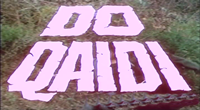
Kites Full HD Movie Download

Do Anjaane Full HD Movie Download

Ujala Full HD Movie Download
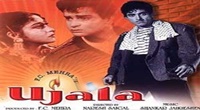
Dum Dum Diga Diga Full HD Movie Download

The Hidden Eye- Teesri Aankh Full HD Movie Download

Gauri-The Unborn Full HD Movie Download
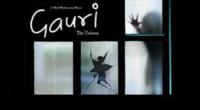
Yuga Full HD Movie Download

Daku Veera Full HD Movie Download
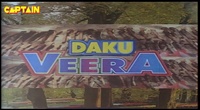
Jai Bhole Bam Bam Full HD Movie Download
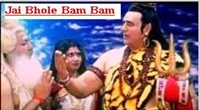
Eradane Maduve Full HD Movie Download

Manassu Full HD Movie Download
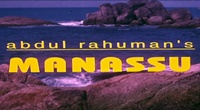
Datta Putrudu Full HD Movie Download

Batman Begins Full HD Movie Download

Aalkkoottathil Thaniye Full HD Movie Download

Mrugaya Full HD Movie Download

Donga Mogudu Full HD Movie Download
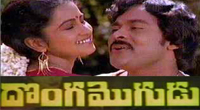
Jai Santoshi Mata Full HD Movie Download

Aata Modalaindi Full HD Movie Download
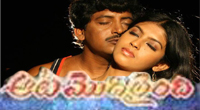
Tenali Ram Krishna Full HD Movie Download

Rambha Neeku Urvasi Naaku Full HD Movie Download

Download latest Movie from bollywood
- 1> baaghi 3
- 2> THE SKY IS PINK MOVIE FULL STORY AND REVIEW
- 3> Luka Chuppi
- 4> TO ALL THE BOYS I’VE LOVED BEFORE
- 5> Kabir Singh
- 6> Street Dancer 3D
- 7> Simmba
- 8> Gone Girl
- 9> The Girl Who Lived
- 10> Ludo
- 11> DILWALE DULHANIA LE JAYENGE
- 12> GUILTY
- 13> The Godfather
- 14> Adventures of Rusty
- 15> Sooryavanshi
- 16> Satyameva Jayate 2
- 17> Thappad
- 18> Bhool Bhulaiyaa 2
- 19> KGFChapter 2
- 20> Mardaani 2
- 21> Pinjar
- 22> Shivaji maharaj
- 23> Ek Villian 2
- 24> Hungama 2
- 25> Divergent
- 26> Mumbai Saga
- 27> The Internship
- 28> HIT (telugu)
- 29> Panga
- 30> The perfect date
- 31> 16 December
- 32> Gopala Gopala (Telugu)
- 33> Brahmastra
- 34> Gangubai Kathiawadi
- 35> Manmadhudu
- 36> Nenu local
- 37> Mahanati
- 38> Shatamanam bavathi
- 39> Lagaan
- 40> After
- 41> MOM
- 42> Shamshera
- 43> Raguvaran BTech
- 44> Khakee
- 45> The villain
- 46> OM
- 47> Mr. perfect
- 48> Bueatifull mind
- 49> Hichki
- 50> Gabbar Singh
- 51> Jogi
- 52> Before Sunrise
- 53> Before Sunset
- 54> Before Midnight
- 55> The Big Bull
- 56> Top Gun: Maverick
- 57> The Purge
- 58> The Sky is Pink
- 59> Laxmmi Bomb
- 60> Sadak 2
- 61> Sufna
- 62> Prithviraj
- 63> PK
- 64> Coolie No 1(2020)
- 65> Black Widow
- 66> Dear Zindagi
- 67> Dil Bechara
- 68> PHIR HERA PHERI
- 69> WAR
- 70> Dostana
- 71> RRR: Roudram Ranam Rudhiram
- 72> Maidan
- 73> Dabbang 3
- 74> Chhalaang
- 75> life as we know it
- 76> SherShaah
- 77> Sandeep Aur Pinky Faraar
- 78> Event Horizon
- 79> 83
- 80> Radhe: Your Most Wanted Bhai
- 81> Gunjan Saxena: The Kargil Girl
- 82> Mr India
- 83> Vivah
- 84> Anokha Bandhan
- 85> Ghost
- 86> Bhoot: Part One - The Haunted Ship
- 87> Haseen Dilruba
- 88> Laal Singh Chaddha
- 89> Qismat
- 90> Rajput
- 91> Drive
- 92> Dil Chahta Hai
- 93> Dil Ki Baazi
- 94> Dil Ka Rishta
- 95> Teesri Manzil
- 96> Dil
- 97> Love Aaj Kal
- 98> Khaali Peeli
- 99> Bunty Aur Babli 2
- 100> Atrangi Re
- 101> Gulabo Sitabo
- 102> Jodi
- 103> Suraj Pe Mangal Bhari
- 104> Deewana
- 105> Attack
- 106> Sardar Udham Singh
- 107> Toofan
- 108> THE LOVEBIRDS
- 109> Jersey
- 110> Ginny Weds Sunny
- 111> Thalaivi
- 112> Shiddat
- 113> Angels vs Zombies
- 114> Koi Mil Gya
- 115> Thank God
- 116> Bhuj: The Pride of India
- 117> Hum Aapke Hain Kaun
- 118> The Platform
- 119> Bird Box
- 120> Roohi Afzana
- 121> Torbaaz
- 122> Nikamma
- 123> World War Z
- 124> Extraction
- 125> Train to Busan
- 126> Life of Pi
- 127> SHAADI MEIN JROOR AANA
- 128> Himmat Aur Mehnat
- 129> To All The Boys: P.S. I Still Love You
- 130> Mimi
- 131> Good Newwz
- 132> Shubh Mangal Zyada Saavdhan
- 133> Raabta
- 134> Harry Potter and the Philosopher's Stone
- 135> Harry Potter and the Chamber of Secrets
- 136> Chhapaak
- 137> War of the Worlds
- 138> Harry Potter and the Prisoner of Azkaban
- 139> Harry Potter and the Goblet of Fire
- 140> MURDER MYSTERY
- 141> Shakuntala Devi
- 142> Bachchan Pandey
- 143> Jayeshbhai Jordar
- 144> Sheer Qorma
- 145> Saina
- 146> 'O' Pushpa I hate tears
- 147> Kedarnath
- 148> MS Dhoni The Untold Story
- 149> Chhichhore
- 150> Badhaai Ho
- 151> Unstoppable
- 152> Oz the Great And Powerful
- 153> The Girl on the Train
- 154> Haathi Mere Saathi 2020
- 155> The Conjuring: The Devil Made Me Do It
- 156> Gandhi Se Pehle Gandhi
- 157> The Song of Scorpions
- 158> Srimanthudu
- 159> Hello Guru Prema Kosame
- 160> Beauty and The Beast
- 161> Black Panther
- 162> Charlie and the Chocolate Factory
- 163> Bole Chudiyan
- 164> Fidaa
- 165> Duvvada Jagannadham
- 166> Bruce Lee: The Fighter
- 167> Hyper
- 168> Yaara
- 169> Red (2020)
- 170> Shivam
- 171> That Is Mahalakshmi
- 172> Nishabdham
- 173> Aashram 2020 web series
- 174> Laxmii
- 175> Mismatched
- 176> STUDENT OF THE YEAR 2
- 177> NAIL POLISH
- 178> Ramprasad Ki Tehrvi
- 179> KAAGAZ
- 180> 12 o Clock
- 181> The Power
- 182> bolo hau
- 183> Tribhanga
- 184> JAMUN
- 185> Madam Chief Minister
- 186> Maasaab
- 187> Aadhaar
- 188> Tanhaji
- 189> Bhaagi 3
- 190> Bhootnath
- 191> MALANG
- 192> Jai Mummy Di
- 193> Haathi Mere Saathi 2021
- 194> Shakeela
- 195> Unpaused
- 196> Annayya
- 197> Vamsoddharakudu
- 198> Mrugaraju
- 199> Narasimha Naidu
- 200> Sankranti
- 201> Manasu Maata Vinadhu
- 202> Anjaane
- 203> Apaharan
- 204> Bachke Rehna Re Baba
- 205> Bewafaa
- 206> Roohi
- 207> Radhe
- 208> Zindagi Khoobsoorat Hai
- 209> Yeh Mohabbat Hai
- 210> Yeh Kya Ho Raha Hai?
- 211> The Tomorrow War
- 212> DehradunDiary
- 213> Meri Shaadi Karaoo
- 214> Matruu Ki Bijlee Ka Mandola
- 215> No One Killed Jesica
- 216> Aag Ka Goola
- 217> Eight Million Dollars
- 218> Three Hundred
- 219> Cats and Dog
- 220> Decoy
- 221> Gold Rush
- 222> You Have Got Mail
- 223> Final Destination three
- 224> Tofan
- 225> Jungle
Request for Download movie Dial M For Murder
- Bollywood movies
- Latest Bollywood movies
- Download all bengali movies
- Download all bhojpuri movies
- Download all english movies
- Download all gujarati movies
- Download all hindi movies
- Download all kannada movies
- Download all malayalam movies
- Download all marathi movies
- Download all oriya movies
- Download all punjabi movies
- Download all tamil movies
- Download all telugu movies
- Bollywood action movies
- Bollywood adventure movies
- Bollywood animation movies
- Bollywood classical movies
- Bollywood comedy movies
- Bollywood crime movies
- Bollywood devotional movies
- Bollywood documentary movies
- Bollywood drama movies
- Bollywood family movies
- Bollywood fantasy movies
- Bollywood historical movies
- Bollywood history movies
- Bollywood horror movies
- Bollywood musical movies
- Bollywood mystery movies
- Bollywood mythological movies
- Bollywood patriotic movies
- Bollywood romance movies
- Bollywood romantic movies
- Bollywood sci-fi movies
- Bollywood social movies
- Bollywood spiritual movies
- Bollywood sports movies
- Bollywood suspense movies
- Bollywood thriller movies
- Bollywood war movies
- Hot actress list
- Hot gujarati actress list
- Hot tamil actress list
- Hot bhojpuri actress list
- Hot assam actress list
- Hot bihari actress list
- Hot jammu and kashmir actress list
- Hot gujarati actress list
- Hot haryana actress list
- Hot konkani actress list
- Hot marathi actress list
- Hot odia actress list
- Hot punjabi actress list
- Hot rajasthani actress list
- Hot kannada actress list
- Hot malayalam actress list
- Hot telugu actress list
- Hot tulu actress list
- Hot Actress list from Indian city
- Hot actress list from ahmedabad
- Hot actress list from alappuzha
- Hot actress list from bangalore
- Hot actress list from bangalore
- Hot actress list from bhopal
- Hot actress list from chandigarh
- Hot actress list from chennai
- Hot actress list from guwahati
- Hot actress list from hyderabad, india
- Hot actress list from indore
- Hot actress list from jaipur
- Hot actress list from kannur
- Hot actress list from kochi
- Hot actress list from kolkata
- Hot actress list from kollam
- Hot actress list from kottayam
- Hot actress list from kozhikode
- Hot actress list from lucknow
- Hot actress list from madurai
- Hot actress list from mangalore
- Hot actress list from mumbai
- Hot actress list from mysore
- Hot actress list from new delhi
- Hot actress list from patna
- Hot actress list from pune
- Hot actress list from thiruvananthapuram
- Hot actress list from thrissur
- Hot actress list from tiruchirappalli
- Hot actress list from vijayawada
- Hot actress list from visakhapatnam
- All Bollywood Movies
- Bollywood Celeb
- >Art Director
- >Audiography
- >Background Music
- >Banner
- >Choreographer
- >Cinematographer
- >Costume Designer
- >Dialogue Writer
- >Director
- >Distributor
- >Editor
- >Executive Producer
- >Hair Stylist
- >Lyricist
- >Music Director
- >Photographer
- >Playback Singers
- >Presenter
- >Producer
- >Production Company
- >Production Designer
- >Screenplay
- >Singer
- >Sound
- >Actor
- >Story Writer
- >Studio
- >Video Director
- >Miscellaneous
- >Publicity (pro)
- >Web Creator
- >Production Labs
- >Publicity Design
- >Publicity Stills
- >Writer
- >Miscellaneous Artists
- >Visual Effects
- >Reporter
- >Music Company
- >Shooting Studios
- >Picturised On
- >Line Producer
- >Co Producer
- >Asst Director
- >Casting Director
- >Cinematography
- >Choreography
- >Dialouge
- >Editing
- >Lyrics
- >Music
- >Story
- >Playback Singer Female
- >Playback Singer Male
- >Actor In A Comic Role (male/female)
- >Child Artiste
- >Ensemble Cast
- >Actor Popular Choice (male)
- >Actor Popular Choice (female)
- >Sa Re Ga Ma Pa Song Of The Year
- >Actor In Supporting Role
- >Actress In Supporting Role
- >Actor In Leading Role
- >Art Direction
- >Actress In Leading Role
- >Sound Recording
- >Costume Design
- >Special Effects
- >Action
- >Actor In A Negative Role
- >Lifetime Achievement Award
- >Cinematic Exellence (director)
- >Cinematic Exellence (male)
- >Cinematic Exellence (female)
- >International Male Icon
- >International Female Icon
- >Actor In A Supporting Role (male)
- >Actor In A Supporting Role (female)
- >Actor In A Comic Role
- >Playback Singer (male)
- >Playback Singer (female)
- >Most Promising Debut (female)
- >Most Promising Debut (male)
- >Most Promising Director
- >Sound Design
- >Lifetime Jodi
- >Marketed Film
- >Jury Award For Best Actor
- >Jury Award For Best Actress
- >Jury Award For Best Film
- >Jury Award For Best Director
- >Playback Singer(male)
- >Lifetime Acheivement Award (male)
- >Excellence Award
- >Jodi Award
- >Performer Of The Year
- >Presented By
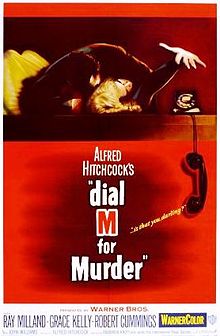 Story of movie Dial M For Murder :
Story of movie Dial M For Murder : 